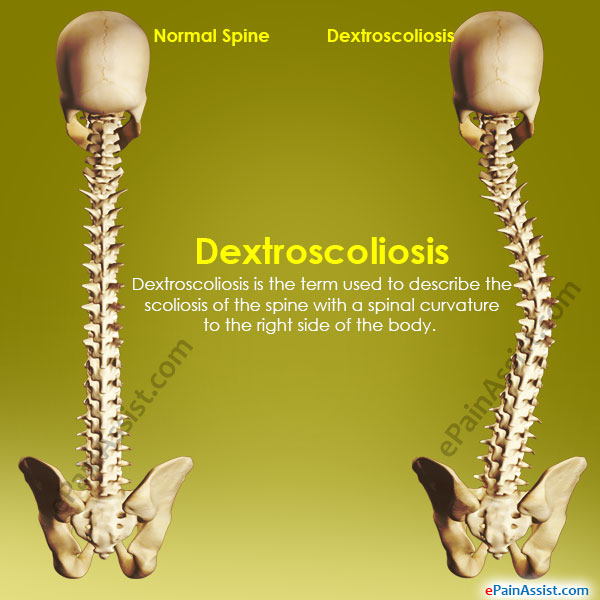Lumbar dextroscoliosis is a medical condition characterized by an abnormal curvature of the spine to the right side in the lower back region. It affects the lumbar or lower spine and can lead to various symptoms such as back pain, muscle spasms, and postural changes. Understanding the causes of lumbar dextroscoliosis is essential for effective treatment and management of the condition.
There are several factors that can contribute to the development of lumbar dextroscoliosis. One of the primary causes is congenital skeletal deformities during fetal development. An abnormal growth or formation of the vertebrae can lead to the curvature of the spine. Additionally, neurological conditions such as cerebral palsy or muscular dystrophy can also impact the spine’s alignment and contribute to the development of dextroscoliosis.
Another common cause of lumbar dextroscoliosis is idiopathic scoliosis, which refers to cases where the cause of the condition is unknown. Idiopathic scoliosis usually occurs during adolescence and can result in an irregular growth of the spine, leading to the characteristic curvature in the lumbar region.
Injuries or trauma to the lumbar spine can also contribute to the development of lumbar dextroscoliosis. Fractures, vertebral slippage (spondylolisthesis), or herniated discs can disrupt the normal alignment of the spine, causing it to curve abnormally.
Furthermore, muscle imbalances or weaknesses in the back can also play a role in the development of lumbar dextroscoliosis. Muscles that support the spine may not function properly, leading to an asymmetric pull on the vertebrae and resulting in a curvature.
Diagnosis of lumbar dextroscoliosis involves physical examination, imaging tests like X-rays or MRIs, and personal medical history assessment. Treatment options vary depending on the severity and underlying cause of the condition. Mild cases can be managed through physical therapy, exercise, and the use of back braces, while more severe cases may require surgical intervention to correct the curvature and stabilize the spine.
In conclusion, lumbar dextroscoliosis is primarily caused by congenital skeletal deformities, idiopathic factors, neurological conditions, injuries, or problematic muscle imbalances. Early detection and appropriate treatment are crucial for managing the condition effectively and improving a patient’s quality of life.
What is the best exercise for dextroscoliosis?
Popular exercises that may help reduce dextroscoliosis symptoms include: Gluteal stretch: Laying flat on the back, straighten both legs upward. Bend one leg at the knee and place the side of the shin of the bent leg on the knee of the straightened leg, allowing the bent leg to relax and stretch outward to the side.
How is lumbar dextroscoliosis treated?
Physical therapy: Targeted exercises and stretching can help improve posture, strengthen muscles, and reduce pain associated with dextroscoliosis. Surgery: In severe cases, where the curvature is significant or causing severe symptoms, spinal fusion surgery may be recommended.

What is the best treatment for dextroscoliosis?
Physical therapy: Targeted exercises and stretching can help improve posture, strengthen muscles, and reduce pain associated with dextroscoliosis. Surgery: In severe cases, where the curvature is significant or causing severe symptoms, spinal fusion surgery may be recommended.
What causes lumbar scoliosis in adults?
Scoliosis in adults is rarely caused by an injury. The spine is a stack of bones held together by soft connective tissue, ligaments, and discs. As we get older, those tissues become less elastic and weaker, and they don’t hold the stack of bones straight, which can lead to a curve in the spine.
What should you not do when you have a migraine?
Consuming lots of alcohol, caffeine, and even foods like sweets, artificial sweeteners, and heavily salted foods (such as cured meats) can also have a negative effect on someone’s migraines. Oversleeping or not sleeping enough, dehydration, and low glucose levels can also exacerbate migraine symptoms — as can stress.
How do you stop a migraine ASAP?
– Turn off the lights. Light and sound can make migraine pain worse. Relax in a dark, quiet room. …
– Try temperature therapy. Apply hot or cold compresses to your head or neck. …
– Sip a caffeinated drink. In small amounts, caffeine alone can relieve migraine pain in the early stages.
What is the fastest way to get rid of a migraine?
– Turn off the lights. Light and sound can make migraine pain worse. …
– Try temperature therapy. Apply hot or cold compresses to your head or neck. …
– Sip a caffeinated drink.

What is the quickest way to get rid of a migraine?
– Turn off the lights. Light and sound can make migraine pain worse. …
– Try temperature therapy. Apply hot or cold compresses to your head or neck. …
– Sip a caffeinated drink.
What are the pressure points to relieve migraines?
How do you know which pressure points to target? For migraine reliefmigraine reliefThere are a few OTC pain relievers that include aspirin, acetaminophen, and caffeine: Excedrin® Migraine, Goody’s® Extra Strength Headache Powder, and their generic versions. One study showed this combination of drugs to be more effective for migraine relief than ibuprofen alone.https://www.withcove.com › learn › best-over-the-counter-mi…Over-the-Counter Migraine Medications: What You Should Know, the most important pressure point to know to relieve headache pain is the space between the base of your thumb and your index finger. For those who want to be acupressure experts, it’s called LI-4 (a.k.a. Hegu).


